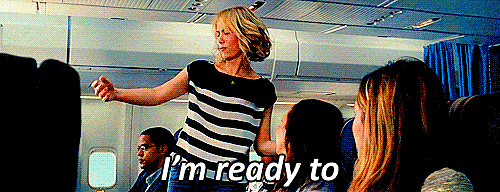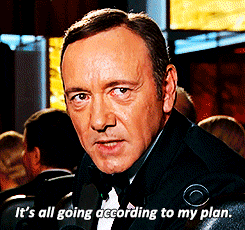Every manager has their bible, the management text they were
instructed to read by a mentor they clutch to their chests and quote from
at any available opportunity. I personally had a manager who loved his journey
through a book outlining the 6 Thinking Hats method by Edward DeBono so much,
he used to refer to staff in meetings by the colour of the hat he had assigned
them based on his observations of them.
Before I even transitioned from team member to team leader I
had a habit of reading books on management, leadership and self-discovery in
the half hour before I went to bed each night. My bookshelves bulged with books
I’d had recommended to me by colleagues, or that I’d stumbled upon in the
bookstore when I was in search of something else.
The Christmas period in Australia is the opportunity to
unwind and relax. The summer is in full swing, organisations across the country
shut down for a fortnight or so, and families go off in search of golden sands to bake on and cold oceans to swim in unless you’re like me in which case you go looking
for a five star resort with a bar, in the pool.
The invention of the electronic reader and the various apps
means we can stock up on some great reading material to take with us without
the issues of my youth. You don’t need to limit the books you plan to read
while sipping a cold beer or cocktail in the hot summer sun. They all fit
neatly in the palm of your hand.
When I was researching topic ideas for this blog post, the
one that sprang to mind was to write about the books that I believe changed my
life, and my future, for the better. Some of these books I’ve not picked up in a
decade or more, but I when I grabbed my notebook and pen it took less than a
minute to come up with 7 books all managers, or would-be managers, should
invest their time reading.
So here they are, in no particular order, my list of the top
7 books on management and self-discovery you should take on your Christmas
Vacation.
The Greatest Salesman in the World:
I first read The Greatest Salesman in the World years ago. Written as a parable and
outlining the life of a poor camel boy named Hafid as he rises from pauper to a
life of luxury. The book is told in monthly installments, ten in total, which
outline the steps Hafid takes to become a merchant of wealth and power. If you
take the book as a guide, implementing the wisdom of the scrolls over the
period of ten months it would be interesting to see just how much your life
could change. I’m planning on doing just that in 2016. It may just be the case
that it’s never too late to teach an old dog new tricks, again, after all.
The Richest Man in
Babylon:
First published in 1928 The Richest Man in Babylon is by
American writer George S. Clason. The book is again told in the form of a
parable translating the secrets of the ancient Babylonians, the first
civilisation to discover the universal law of prosperity and abundance. The
book outlines topics such as thrift, financial planning, saving and personal
wealth in simple, easy to understand words. With over 2 million copies of the
parable sold around the world since it was first published, The Richest Man in
Babylon has been referred to as one of the greatest inspirational books of all
time.
The One Minute Manager:
The One Minute Manager, the perennial best seller by Ken Blanchard, PhD and Spencer
Johnson, MD, is one of the best-selling management texts of all time. The book
aims to provide managers – both experienced and new – with the tools they need
to effectively develop and lead both their teams and themselves. The book which
has recently been revised to address modern management issues covers topics
such as; the rise of technology, a flattening global economy and the pressures
on the corporate world to do more than ever before with less resources. The
book is full of snippets of information that stay with you long after you’ve
closed the covers.
Who Moved My Cheese
Who Moved My Cheese tells the story of two mice and their ever
dwindling supply of cheese, and two humans all of which live in a maze. Addressing
the need to be adaptable, embrace change and think outside the box, this book
is one of my personal favourites. The book deals with the effects of change on
the lives of the characters, that it can either be a disaster or a blessing
depending on the way you look at it.
A short film was made of the book, which I saw on Youtube,
so if you don’t have the time to read this little parable, you can always watch
the movie.
Who moved my cheese? The Movie
Based on the book "Who Moved My Cheese" by Spencer Johnson, M.D.
Who moved my cheese? an a-mazing way to deal with change in your work and in your life
Movie originally copyrighted in 2003.
Credits:Original illustrations by Steve Pileggi ; animation by Wyat Germer, Benjamin Burnett ; original music by Brad Smith, Songsmith Productions.
Based on the book "Who Moved My Cheese" by Spencer Johnson, M.D.
Who moved my cheese? an a-mazing way to deal with change in your work and in your life
Movie originally copyrighted in 2003.
Credits:Original illustrations by Steve Pileggi ; animation by Wyat Germer, Benjamin Burnett ; original music by Brad Smith, Songsmith Productions.
Responsibility: Spencer Johnson MD & Double
Take Productions presents; produced & directed by L. Dee Johnson; a
production of LDJ Film Productions.
How to Win Friends
and Influence People
Back in the dark ages of the early 1990’s my father handed
me a dog-eared paperback copy of Dale Carnegie’s How to Win Friends andInfluence People. I can still remember the Summer I read it. I was in my first
job at a Supermarket and had just left school. The book was so old and
well-read the pages were falling into my lap as I read on. The book by Carnegie
is the Granddaddy of self-improvement books, and the language in it can be
quite archaic at times, but the timeless messages of how to handle people,
strategies to improve your likability, negotiation skills and leadership are
still as relevant in today’s fast moving, disruptive environment as they were
when the book was originally published in 1936.
The 7 Habits of
Highly Effective People
Stephen R. Covey’s The 7 Habits of Highly Effective People can
be a heavy read at times, but its effectiveness in transforming people’s lives
cannot be underestimated. The main theme of the book is the importance of a
balance of personal and professional effectiveness before you can have true
success. The book involves the reader undertaking work, so it’s not a quick fix
solution but the strategies contained in it launched a revolution when it was
originally published in 1990, with people including Presidents and CEO’s to
educators and parents saying how it transformed their lives.
The Alchemist
I was given a copy of The Alchemist by Paulo Coelho by an
ex-manager for a birthday gift a decade or so ago. At the time I was in the
process of transitioning from a 15 year career working in inbound call centres,
to taking the first steps in following my dream to be a professional writer. I
was pretty much convinced I’d bitten off more than I could chew, and no
amount of chewing was going to stop this massive shift in my life from choking
me. The novel by the best-selling Brazilian author has been translated into 67
languages and has sold over 2 million copies. The story centres on a young man
whose sleep is plagued by dreams of a grand adventure, a purpose. On the advice
of a Gypsy woman, he sets out to follow the lead of his dream across the world
to Egypt. The novel explores the themes of following your dreams and embracing
the unknown in the search for your true purpose. I’ve read the novel several
times now, and each time I do I find another layer to the story.
So that is my list of 7 inspirational books on management,
leadership and self-development I recommend you download to your Kindle and
take to the beach – or the bar in the pool if you can find one – to read on you
Summer vacation.
What books have you read that you would recommend to others?
Leave a comment below and tell us the book you feel transformed your life?
Mike Cullen has recently returned to Akolade after a period as the
conference producer for one of Australia's leading economic think tanks. Mike
began working in the conference industry in 2007 after looking for a career
change from the high pressured world of inbound customer service. Mike has
worked for some of the most well-known conference and media companies in the
B2B space and in his spare time is working on his first novel in a planned Epic
Fantasy trilogy.










































